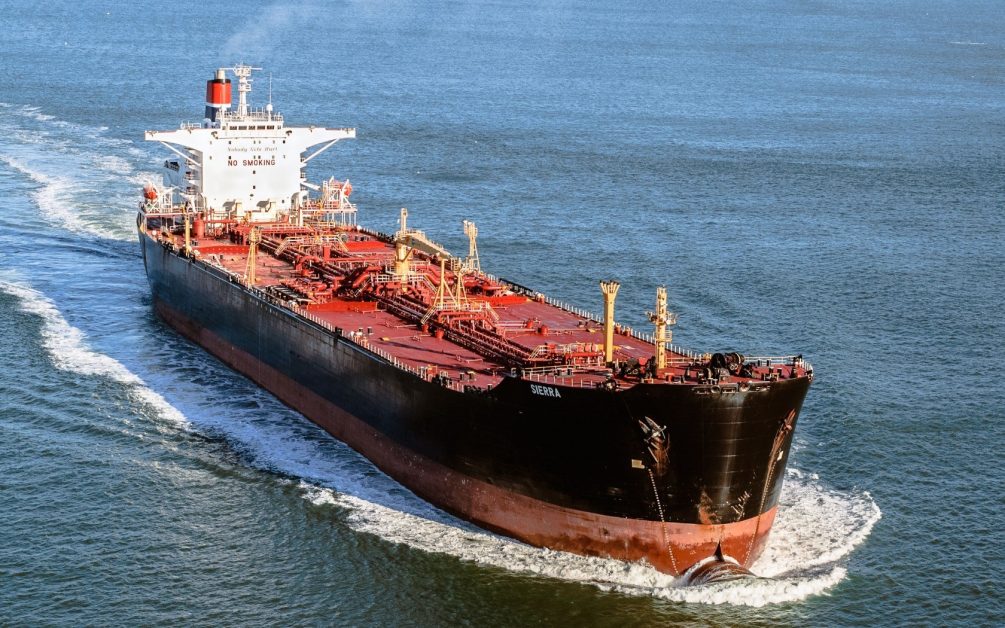Iran is storing around 60 million barrels of sanctioned oil on board tankers operated and owned by the National Iranian Tanker Company (NITC), a senior official from the firm told The Straits Times.
The official, who declined to be named as he was not authorised to speak for the state-owned shipping firm, said Iran is utilising 80 per cent of its fleet for storing oil while the rest of its tankers transport crude from deep-water anchorages in Malaysia to China.
NITC is the biggest tanker operator in the Islamic republic.
Organisation of the Petroleum Exporting Countries member Iran had been pumping massive amounts of oil into its tankers over the past several months in anticipation that it would get relief from economic sanctions.
The West has imposed severe sanctions on Iran in an attempt to slow down its nuclear programme, which it believes is being developed for military use.
In 2015, an agreement was reached by a coalition of western powers whereby Iran would limit its uranium enrichment activity.
However, in 2018, then US President Donald Trump ditched the deal, saying Iranian leaders were not doing enough to curb the country’s nuclear activities, ballistic missile programme and regional influence, and reimposed sanctions that have crippled Iran’s economy.
Recent attempts at indirect talks on an accord, formally known as the Joint Comprehensive Plan of Action (JCPOA), have also broken down, forcing Teheran to revert back to covert oil sales.
The aim of the JCPOA is to keep Iran from expanding its nuclear programme, which many in the West suspect is for the sole purpose of developing nuclear weapons.
The official, who was in Singapore for a conference, said the bulk of the fleet is currently anchored off Kharg Island, a key Iranian crude export terminal.
Shipping brokers estimate that NITC has around 60 to 65 tankers, the bulk of which are supertankers.
Iran generally does not release official trade data and there is no definitive figure for its oil exports, or how much oil it is currently storing on its ships.
In 2020, the United States government’s Office of Foreign Assets Control blacklisted NITC for allegedly giving financial support to the Islamic Revolutionary Guard Corps-Qods Force.
The Qods is the branch of the Revolutionary Guards which operates outside of Iran’s borders. Members of the Qods force have fought in support of President Bashar al-Assad in Syria’s civil war and backed Iraqi security forces in their battle against Islamic State militants in recent years.
Last month, the US Treasury Department imposed sanctions on a network of companies involved in what it said was the sale of hundreds of millions of dollars’ worth of Iranian petrochemical and petroleum products to South and East Asia.
The action targeted Iranian brokers and front companies in the United Arab Emirates, Hong Kong and India, it said.
Washington has also increasingly targeted Chinese companies over the export of Iran’s oil as the prospects of reviving the nuclear pact have dimmed.
Mr Emril Jamil, senior crude analyst at Refinitiv, a unit of the London Stock Exchange Group, said Iran is now getting desperate and selling the sanctioned oil at much lower prices as it fights to defend market share in China.
“China is now Iran’s biggest client, and with competition from the Russian barrels, Teheran has no choice but to cut prices,” he added.
Before Russia invaded Ukraine in late February, around half of Russia’s crude and petroleum product exports went to Europe, according to the International Energy Agency.
Now Russia – whose oil is shunned by the European Union – is the third largest supplier of crude oil to Asia after Saudi Arabia and the United Arab Emirates, after it began to divert shipments elsewhere at discounted rates.
Russia has also become the largest supplier to China, having sold close to 1.77 million barrels per day in September, representing around 17 per cent of that nation’s market.
Mr Jamil said it is rare to see direct oil shipments from Iran to China. According to Refinitiv data, just two supertankers were seen to have sailed from Kharg Island to China in August. The vessels were carrying about two million barrels of crude each. Ms Emma Li, a senior analyst at data intelligence firm Vortexa, said China imported about 600,000 barrels per day (bpd) of Iranian crude in the third quarter, slightly higher than the same period in 2021, which it had assessed at 550,000 bpd.







